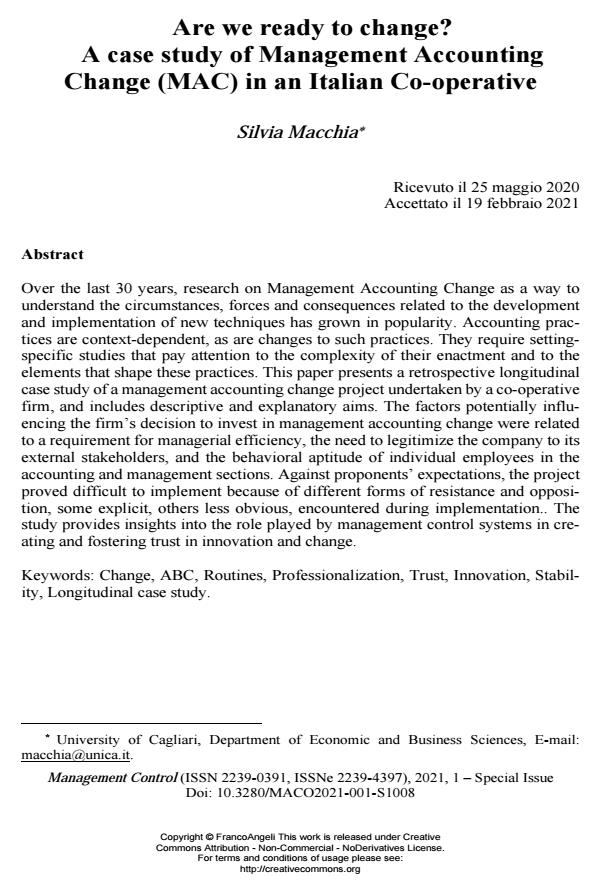Are we ready to change? A case study of Management Accounting Change (MAC) in an Italian Co-operative
Journal title MANAGEMENT CONTROL
Author/s Silvia Macchia
Publishing Year 2021 Issue 2021/suppl. 1
Language English Pages 24 P. 141-164 File size 248 KB
DOI 10.3280/MACO2021-001-S1008
DOI is like a bar code for intellectual property: to have more infomation
click here

FrancoAngeli is member of Publishers International Linking Association, Inc (PILA), a not-for-profit association which run the CrossRef service enabling links to and from online scholarly content.
Over the last 30 years, research on Management Accounting Change as a way to understand the circumstances, forces and consequences related to the develop-ment and implementation of new techniques has grown in popularity. Accounting practices are context-dependent, as are changes to such practices. They require setting-specific studies that pay attention to the complexity of their enactment and to the elements that shape these practices. This paper presents a retrospective lon-gitudinal case study of a management accounting change project undertaken by a co-operative firm, and includes descriptive and explanatory aims. The factors po-tentially influencing the firm’s decision to invest in management accounting change were related to a requirement for managerial efficiency, the need to legiti-mize the company to its external stakeholders, and the behavioral aptitude of in-dividual employees in the accounting and management sections. Against propo-nents’ expectations, the project proved difficult to implement because of different forms of resistance and opposition, some explicit, others less obvious, encountered during implementation.. The study provides insights into the role played by man-agement control systems in creating and fostering trust in innovation and change.
Keywords: Change, ABC, Routines, Professionalization, Trust, Innovation, Stabil-ity, Longitudinal case study.
- Management Control System in Smart and Sustainable Firms Domenica Lavorato, pp.59 (ISBN:978-3-031-81435-8)
- Creating Value Through Sustainability Lorenzo Leto, Diletta Vito, Francesca Bernini, pp.65 (ISBN:978-3-031-74291-0)
Silvia Macchia, Are we ready to change? A case study of Management Accounting Change (MAC) in an Italian Co-operative in "MANAGEMENT CONTROL" suppl. 1/2021, pp 141-164, DOI: 10.3280/MACO2021-001-S1008